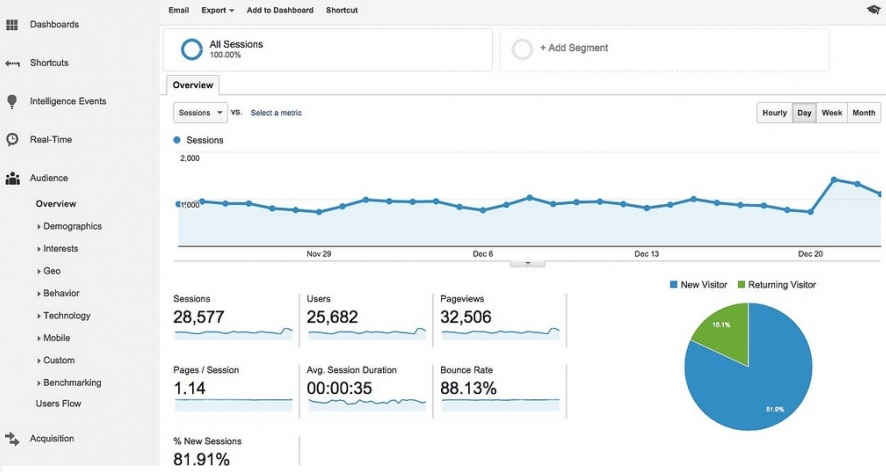Social media marketing and social signals
In the ever-evolving realm of digital marketing, the symbiotic relationship between social media marketing and social signals has become a pivotal force, shaping the online visibility and success of businesses. This comprehensive guide delves into the intricacies of this connection, exploring how social media marketing strategies influence and are influenced by social signals.
1. Defining Social Signals:
Social signals encompass the various interactions and engagements on social media platforms. Likes, shares, comments, and overall social media activity contribute to these signals, serving as indicators of a brand’s popularity, relevance, and resonance within its online community.
2. The Dynamics of Social Media Marketing:
Social media marketing involves the strategic use of social platforms to connect with audiences, build brand awareness, and drive business goals. Content creation, community engagement, and targeted advertising are key components of a robust social media marketing strategy.
3. Impact on Search Engine Rankings:
While Google has stated that social signals are not direct ranking factors, there is evidence to suggest that the correlation between social signals and search engine rankings exists. Indirectly, the visibility and authority gained through social media marketing efforts can influence organic search results.
4. Building Brand Authority:
Active and engaging social media profiles contribute to the establishment of brand authority. Regularly sharing valuable content, responding to audience queries, and participating in industry conversations position a brand as an authoritative figure within its niche.
5. Content Amplification through Shares:
One of the primary benefits of social media marketing is the potential for content amplification. When users find content valuable, they are likely to share it with their networks, extending the reach far beyond the brand’s immediate followers. This organic sharing contributes to increased social signals.
6. Enhanced Content Discoverability:
Social media platforms serve as content discovery hubs. A well-crafted social media marketing strategy ensures that content is optimized for platform-specific algorithms, making it more discoverable to users interested in relevant topics.
7. Fostering Community Engagement:
Effective social media marketing goes beyond broadcasting messages; it involves fostering community engagement. Building a loyal and engaged community translates into increased social signals, as active participation reflects positively on the brand’s online presence.
8. Social Proof and Credibility:
High social signals, such as a large number of followers, likes, and positive comments, contribute to social proof. This social validation enhances a brand’s credibility, influencing potential customers and creating a positive perception in the minds of the audience.
9. The Role of Click-Through Rates (CTR):
Social signals, particularly those indicating user engagement, can indirectly influence click-through rates. Compelling content with high engagement rates is more likely to attract clicks, leading to increased website traffic and potential conversions.
10. Harnessing User-Generated Content (UGC):
Social media marketing encourages the generation of user-generated content. When users create and share content related to a brand, it not only serves as authentic promotion but also generates valuable social signals, reflecting a genuine connection between the brand and its audience.
11. Social Signals as Quality Indicators:
Search engines aim to provide users with high-quality and relevant content. Social signals can serve as indicators of content quality. When a piece of content receives positive social engagement, search engines may interpret it as valuable and worthy of visibility in search results.
12. The Influence of Social Shares on Backlinks:
Social signals, particularly the number of shares a piece of content receives, can impact its potential for acquiring backlinks. Content that gains traction on social media is more likely to attract attention from bloggers, journalists, and other content creators, leading to valuable backlinks.
13. Measuring Social Signals Impact:
To understand the impact of social signals on a brand’s online presence, it’s crucial to employ analytics tools. Track social metrics, analyze audience behavior, and correlate these insights with website analytics to measure the tangible outcomes of your social media marketing efforts.
14. Adapting Strategies to Platform Algorithms:
Each social media platform has its own algorithm for content visibility. A successful social media marketing strategy involves staying informed about algorithm updates and adapting content creation and posting schedules accordingly to maximize organic reach and social signals.
15. Balancing Quantity and Quality of Social Signals:
While quantity matters, the quality of social signals is equally important. Genuine interactions and meaningful engagements contribute more positively to a brand’s reputation and online authority than superficial metrics alone.
16. Leveraging Influencer Collaborations:
Influencers play a significant role in social media marketing. Collaborating with influencers can amplify social signals by tapping into their established audiences, increasing the visibility and credibility of the brand.
17. Social Listening for Strategy Refinement:
Implement social listening tools to monitor brand mentions, sentiment, and industry trends. Insights gathered through social listening can inform adjustments to your social media marketing strategy, ensuring alignment with the evolving preferences of your audience.
18. Strategic Use of Hashtags:
Hashtags enhance content discoverability and engagement. Incorporate relevant and trending hashtags into your social media marketing campaigns to connect with broader conversations and increase the likelihood of content being discovered by a wider audience.
19. The Role of Video Content:
Video content tends to generate high engagement on social media. Incorporate video into your social media marketing strategy to capitalize on the format’s popularity and encourage interactions, leading to increased social signals.
20. Monitoring Competitor Strategies:
Stay informed about your competitors’ social media strategies. Analyze their content, engagement tactics, and social signals. This competitive intelligence can inspire new ideas and help you position your brand effectively within your industry.
21. Localized Social Signals for SEO:
For businesses with a local focus, encourage localized social signals. This includes geotagged posts, local events participation, and engagement with the local community. Localized signals contribute to improved local search visibility.
22. Embracing Social Media Advertising:
Paid social media advertising can complement organic efforts. Strategically planned ad campaigns can increase brand visibility, engagement, and social signals. Utilize targeting options to reach specific demographics aligned with your brand.
23. Encouraging Reviews and Testimonials:
Positive reviews and testimonials shared on social media platforms contribute to social signals. Encourage satisfied customers to share their experiences, creating a positive feedback loop that enhances your brand’s online reputation.
24. Aligning Social Media Goals with Business Goals:
Ensure that your social media marketing goals align with broader business objectives. Whether it’s increasing sales, driving website traffic, or boosting brand awareness, a well-aligned strategy enhances the impact of social signals on overall business success.
25. The Ever-Changing Landscape:
Social media marketing and social signals are part of a dynamic landscape. Stay adaptable to changes in user behavior, platform algorithms, and industry trends. Flexibility and a willingness to evolve strategies are crucial for sustained success.

26. Encouraging Employee Advocacy:
Leverage your employees as brand advocates on social media. Encourage them to share company updates, achievements, and relevant content, amplifying your reach and increasing social signals through authentic engagement.
27. Integration of Social Platforms:
Integrate various social media platforms to create a cohesive brand presence. Cross-promotion and consistent messaging across platforms contribute to a unified brand image and positively impact social signals.
28. Storytelling for Emotional Connection:
Incorporate storytelling into your social media marketing strategy. Narratives that evoke emotions resonate strongly with audiences, encouraging meaningful interactions and increasing social signals through shares and comments.
29. Utilizing Social Media Analytics Tools:
Harness the power of social media analytics tools to gain deeper insights into your audience’s behavior. Understand which types of content generate the most social signals and tailor your strategy based on data-driven decisions.

30. Social Media Contests and Giveaways:
Engage your audience with interactive content such as contests and giveaways. Encourage participation through likes, shares, and comments, creating a surge in social signals and fostering excitement around your brand.
31. Consistent Posting Schedule:
Establish a consistent posting schedule to maintain an active presence on social media. Regular updates signal to algorithms and followers that your brand is consistently providing valuable content, leading to sustained social signals.
32. Personalizing Communication:
Personalize your interactions on social media. Respond to comments, address users by name, and tailor your content to cater to the specific interests of your audience. Personalization enhances user experience and encourages social engagement.
33. Trendjacking for Timely Relevance:
Leverage trending topics and hashtags for timely relevance. Creating content around trending subjects can increase the likelihood of being discovered by a broader audience, leading to a surge in social signals.
34. Monitoring Social Mentions:
Keep a close eye on social mentions of your brand. Respond to both positive and negative mentions promptly. Active engagement showcases transparency and attentiveness, positively impacting social signals.
35. Mobile Optimization for Social Content:
Optimize your social media content for mobile users. A significant portion of social media engagement occurs on mobile devices. Ensure that your visuals, captions, and links are mobile-friendly to enhance the overall user experience.
36. Leveraging LinkedIn for B2B Engagement:
For B2B brands, leverage the power of LinkedIn. Engage with industry professionals, share thought leadership content, and participate in relevant groups to enhance your brand’s authority and increase social signals within the professional community.
37. Social Media Crisis Management:
Be prepared for social media crises. Effective crisis management can mitigate negative social signals and prevent potential damage to your brand’s online reputation. Address issues transparently and demonstrate a commitment to resolution.
38. Conducting Social Media Audits:
Regularly conduct social media audits to assess the effectiveness of your strategy. Analyze which types of content resonate the most, identify areas for improvement, and refine your approach to continually optimize social signals.
39. Utilizing Rich Media:
Incorporate rich media, such as infographics, GIFs, and interactive content, into your social media marketing. Visual content tends to garner higher engagement, leading to increased social signals and improved content visibility.
40. Monitoring Competitor Social Signals:
Keep an eye on your competitors’ social signals. Analyzing their successful strategies and identifying gaps in their approach can provide valuable insights for refining your own social media marketing strategy.
41. Aligning Social Metrics with Business Goals:
Ensure that the metrics you track on social media align with broader business goals. Whether it’s lead generation, brand awareness, or customer retention, aligning social metrics with business objectives ensures a focused and impactful strategy.
42. Accessibility Considerations:
Make your content accessible to a diverse audience. Ensure that images have alt text, videos have closed captions, and links are descriptive. Enhancing accessibility not only broadens your audience but positively impacts social signals.
43. Experimenting with Emerging Platforms:
Explore emerging social media platforms to diversify your brand’s online presence. Experimenting with new platforms allows you to tap into different audiences and adapt your strategy to the evolving landscape of social media.
44. Tracking Hashtag Performance:
Monitor the performance of hashtags used in your campaigns. Track the reach and engagement associated with specific hashtags to understand their effectiveness and refine your use of hashtags for increased social signals.
45. Leveraging Social Listening for Content Ideas:
Use social listening tools to identify trending topics and discussions within your industry. This insight can inspire new content ideas that align with current conversations, increasing the relevance and impact of your social media marketing efforts.
46. Encouraging User Reviews on Social Platforms:
Encourage satisfied customers to leave reviews on your social media platforms. Positive reviews contribute to social signals, enhance brand credibility, and influence potential customers in their decision-making process.
47. Integrating Chatbots for Customer Interaction:
Integrate chatbots into your social media strategy for efficient customer interaction. Chatbots can handle common queries, provide instant responses, and enhance user engagement, contributing to positive social signals.
48. Collaborating with Micro-Influencers:
Consider collaborating with micro-influencers within your niche. Micro-influencers often have highly engaged, niche audiences. Partnering with them can increase social signals through authentic and targeted interactions.
49. Analyzing Sentiment Analysis:
Implement sentiment analysis tools to gauge the sentiment around your brand on social media. Understanding the sentiment of mentions allows you to tailor your responses and maintain a positive online reputation.
50. Exploring Paid Social Advertising:
Leverage paid social advertising strategically. Investing in targeted social media ads can boost your content’s visibility, increase engagement, and contribute to a surge in social signals.
In summary, the relationship between social media marketing and social signals is dynamic and multifaceted. By implementing a holistic and adaptable strategy, monitoring key metrics, and staying attuned to industry trends, businesses can harness the full potential of social signals for enhanced online visibility and brand success.
In conclusion, the relationship between social media marketing and social signals is intricate and influential. By understanding how these elements intersect and strategically incorporating this knowledge into your digital marketing efforts, you can amplify your brand’s online presence, foster community engagement, and drive tangible business outcomes.






